From November 14th – 21st, 2023, members of the RIESGOS 2.0 project traveled to Chile and Perú to present the results of their work to partners in both countries.
Upon arrival on Tuesday morning, the senior project members attended a meeting at the German Embassy in Santiago de Chile. The other project members prepared for the week’s meetings and we all met in the evening for a planning session and dinner.
Wednesday morning, we met with CIDIGEN at the Campus San Joaquín of the Universidad Técnica Federico Santa María. CIGIDEN (https://www.cigiden.cl/en/home/) is a center of excellence that involves several Chilean universities and aims to create knowledge and prevent extreme natural events from becoming disasters. In the afternoon, we were joined by several members of civil protection agencies for a round-table discussion.
On Thursday we left early in the morning and travelled to Valparaiso. There we met at the Hydrographic and Oceanographic Service of the Chilean Navy (Servicio Hidrográfico y Oceanográfico de la Armada de Chile, SHOA). The Vice Commander, who has a long professional relationship with several members of the RIESGOS project, greeted us warmly.
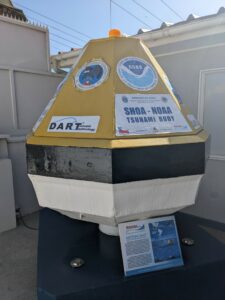
After a presentation about SHOA and an update on the RIESGOS work, we were invited to observe a drill of the National Tsunami Warning System (Sistema Nacional de Alarma de Maremotos, SNAM). This was very interesting.
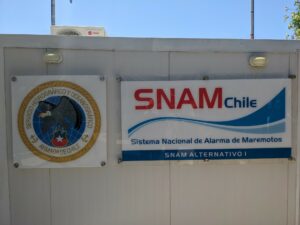
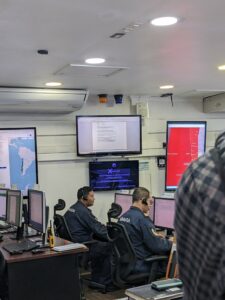
We then had lunch at the Club Naval in downtown Valparaíso.
In the afternoon, the group split up again. The Spanish-speaking colleagues went to a meeting with the National System for Disaster Prevention, Mitigation and Response Service (Servicio Nacional de Prevención y Respuesta ante Desastre, SENAPRED). The other colleagues went to the Campus Casa Central Valparaíso of the Universidad Técnica Federico Santa María. The campus is quite spectacular, as you can see from the photos below.
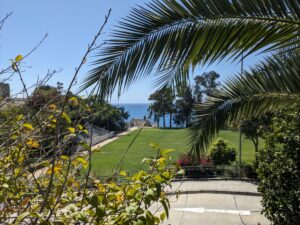
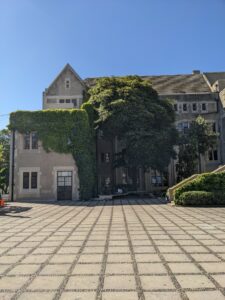
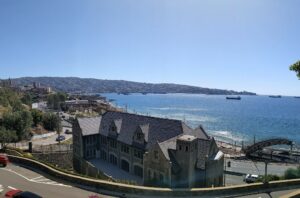
We met with the Dean of the Architecture Faculty, and some of his students showed us a system for simulating vertical evacuations. Participants navigate through buildings using virtual reality headsets and try to find ways upstairs to get to safety in a simulated tsunami event. Two colleagues were invited to try it themselves and both bravely found their way to simulated safety. We were then given a tour of the campus and returned to Santiago in the afternoon.
On Friday, two colleagues and I went to the German-Chilean Chamber of Industry and Commerce to present the work of our respective companies and to network with Chilean partners. This culminated in good discussions with the Chilean participants. We had the afternoon off, so we worked a bit and walked around the neighborhood.
On Saturday, we flew to Lima, arrived at our hotels in Miraflores and ended the day with a seaside dinner. Sunday was all about sightseeing, before we got back to work on Monday. My colleagues and I had another networking meeting, this time at the German-Peruvian Chamber of Industry and Commerce. Once again, there was a lot interest and we had good discussions.
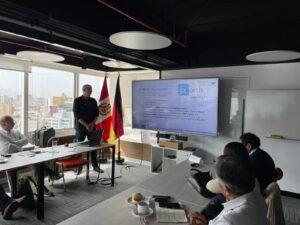
In the evening, we gathered for a farewell dinner, since the English speaking members of the project were leaving the next day.
On Tuesday, we had another round table meeting with several members of Peruvian civil protection agencies, followed by lunched. It was then time for me to leave for the airport.
All in all, it was a very interesting trip with really nice colleagues. Our work was generally considered very important. Howebver, there was some discussion about how to sustain the results after the project is finished. This is a topic for the coming weeks until the end of the project in February 2024.
Leave a Reply